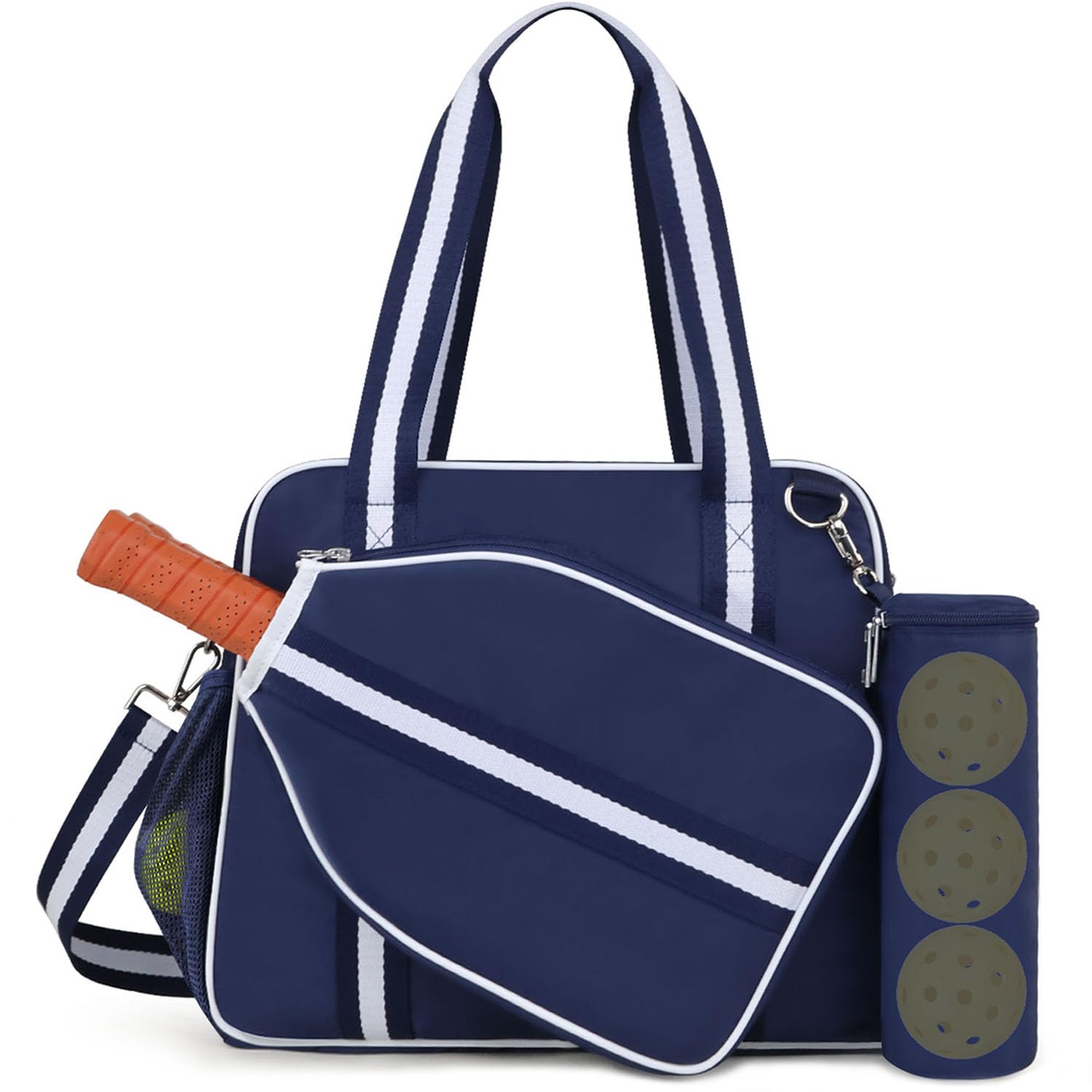 The selection of low-hygroscopicity polyester ensures that internal moisture, such as condensation, is sealed, thereby preventing environmental dampness from affecting the stored composite paddle ... — Movker Pickleball Tote Bag for Women Men with Paddle Cover Pocket External Ball Bag and Adjustable Shoulder Strap Fence Hook — $##.99
The selection of low-hygroscopicity polyester ensures that internal moisture, such as condensation, is sealed, thereby preventing environmental dampness from affecting the stored composite paddle ... — Movker Pickleball Tote Bag for Women Men with Paddle Cover Pocket External Ball Bag and Adjustable Shoulder Strap Fence Hook — $##.99Get this deal.
It resists the fluidity of traditional fabrics, preferring a stiff, dependable stance even when unburdened. This polymer, an artifact of petrochemical derivation, possesses an unusual resistance to the fine grit and staining pervasive on asphalt courts, rendering the inevitable dirt a temporary surface condition. This necessity of utility dictates its visual presence; the faint, almost indiscernible sheen of the synthetic surface catches the harsh, mid-day light differently than natural fibers, creating unexpected reflections.
The empty weight settles at approximately 0.68 kilograms (1.5 pounds). This specific mass—neither insubstantial nor truly heavy—establishes an odd, assertive momentum when transitioned from hand to shoulder, creating a palpable awareness of its presence. Inside, the lining often consists of a pale grey 210 Denier nylon, a specification disproportionately delicate compared to the robust 600D exterior shell. This disparity between the outer fortress and the inner fragility compels the user to confront two distinct tonal worlds simply by moving the zipper. It is a subtle visual discord that serves no obvious ergonomic function.
The Synthetic Refusal
The construction involves complex, interlocking panels meant to defy the natural tendency of fabric to sag. The engineers selected this specific polyester not merely for its tensile strength, but for its low hygroscopicity—its unwillingness to absorb moisture. This property ensures that sweat absorbed by damp towels or condensation from water bottles remains sealed within the interior, protecting the paddle stored alongside it from unintended humidity fluctuations. The commitment to dryness is absolute.
A Calculus of Volume
The bottom panel, despite the bag's classification as a soft tote, frequently incorporates a thin layer of rigid polyethylene board, inserted between the lining and the external fabric. This component, rarely noted in promotional descriptions, is the precise mechanism by which the base maintains its mandated rectangular shape, preventing the vessel from collapsing into an unstable heap on the court surface. Furthermore, the thread utilized for the primary seams is often high-tensile nylon, capable of supporting stresses significantly greater than the maximum expected load of balls, sneakers, and hydration bottles. This over-engineering suggests a profound skepticism regarding the user's restraint.
***
* The interior lining is sometimes manufactured using 210D nylon, a specification that feels disproportionately delicate compared to the robust 600D exterior shell.
* The selection of low-hygroscopicity polyester ensures that internal moisture, such as condensation, is sealed, thereby preventing environmental dampness from affecting the stored composite paddle materials.
* The self-repairing teeth commonly found on the primary zipper coil are designed to automatically re-engage after minor misalignment, addressing a specific, frustrating point of failure intrinsic to prolonged athletic gear use.
* The incorporated rigid polyethylene board in the base is the defining feature that prevents the structure from collapsing inward, maintaining a fixed footprint of approximately 17 x 12 inches when set down.
Get It On Amazon ::: (brought to you by Kiitn)
▷ Get this deal.
Pickleball Tote Bag for Women Men with Paddle Cover Pocket External Ball Bag and Adjustable Shoulder Strap Fence Hook Price, $32.76 $ 32 . 76 - $36.79 $ 36 . 79 See options
#Ad Our articles include affiliate links: If you buy something through a link, we may earn a commission 💕
[ Buy It Here ]

No comments:
Post a Comment